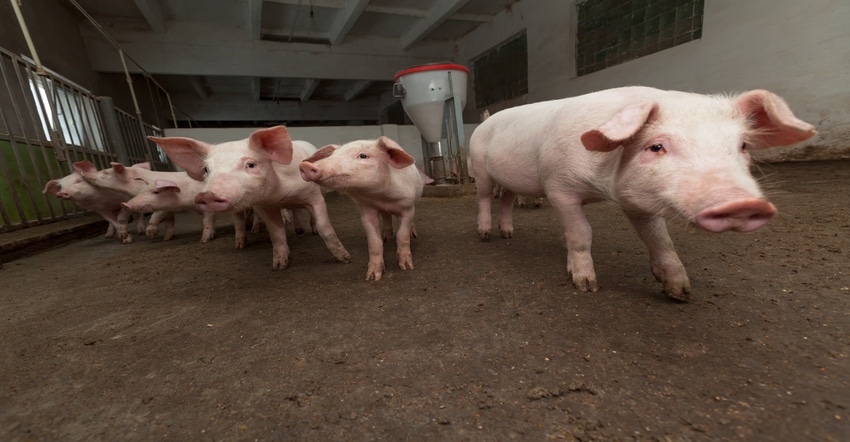The benefits of feeding bioactive peptides to swine
Peptiva is a patent-pending bioactive peptide that optimizes performance of swine.
November 6, 2020

Sponsored Content
Peptiva is a patent-pending bioactive peptide product manufactured for the use in swine, poultry and aqua diets. Peptiva is manufactured through a specialized process utilizing specialty fish meal varieties and soybean meal to create a heat-stable and feed-safe bioactive peptide product. The product has been thoroughly tested in an academic setting and has also been put to the test in commercial operations.
One of the classical papers that highlights the strength of utilizing peptides in swine diets (Rerat et al., 1988), demonstrated a linear increase in ileal endogenous flow or absorption of Lysine in pigs that were given an oral dose of peptides in conjunction with infused-free amino acids. Further research has also confirmed the ability of feeding peptides with free amino acids will increase the absorption up to four times more than feeding just free amino acids. Within swine the majority of the data supporting the use of Peptiva have been in trials demonstrating the replacement of more expensive, highly digestible protein sources such as spray-dried plasma and fish meal, and/or by reducing the amino acid content of diets. Throughout the trial periods, pigs fed Peptiva have equaled, if not surpassed, the positive control treatments for body weight (Figure 1), average daily gain and feed efficiency, while being diets lower in cost and crude protein.
Furthermore, to better understand the value of Peptiva to nursery pigs, two trials were conducted with a pharmacological zinc oxide replacement model in two different trials. Optimal performance was observed when pigs were fed either 0.25-0.50% Peptiva on top of pharmacological levels of zinc, but when diets were only fed Zn at requirement levels, adding Peptiva back into the diets allowed pigs to perform similar to the positive control fed pigs.
Additionally, to better understand the mode of action of Peptiva in swine, a fecal microbiome study was conducted. Poudel et al. (2020) found that pigs fed Peptiva had distinctly different profiles compared to the control at Day 7 and Day 21 post-weaning, but due to lack of growth response the changes in microbiome are inclusive on its role in the direct or indirect mode of actions of Peptiva when fed to pigs. These benefits can be seen in the first trial, whereas pigs fed 0.50% Peptiva on top of pharmacological levels of zinc were 13.8% heavier at Day 21 (Figure 2) and numerically heavier if fed the lower levels of zinc oxide.
As one can see, bioactive peptides not only improve absorption of amino acids, but also elicit body weight and feed efficiency improvements. In many of the trials, not only were specialty or highly digestible protein sources replaced with cheaper peptides, but lysine levels were also reduced. This ability to lower lysine and other amino acids in the diet gives further economic and environmental advantages for utilizing peptides in nutritional programs for swine.
About the Author(s)
You May Also Like



